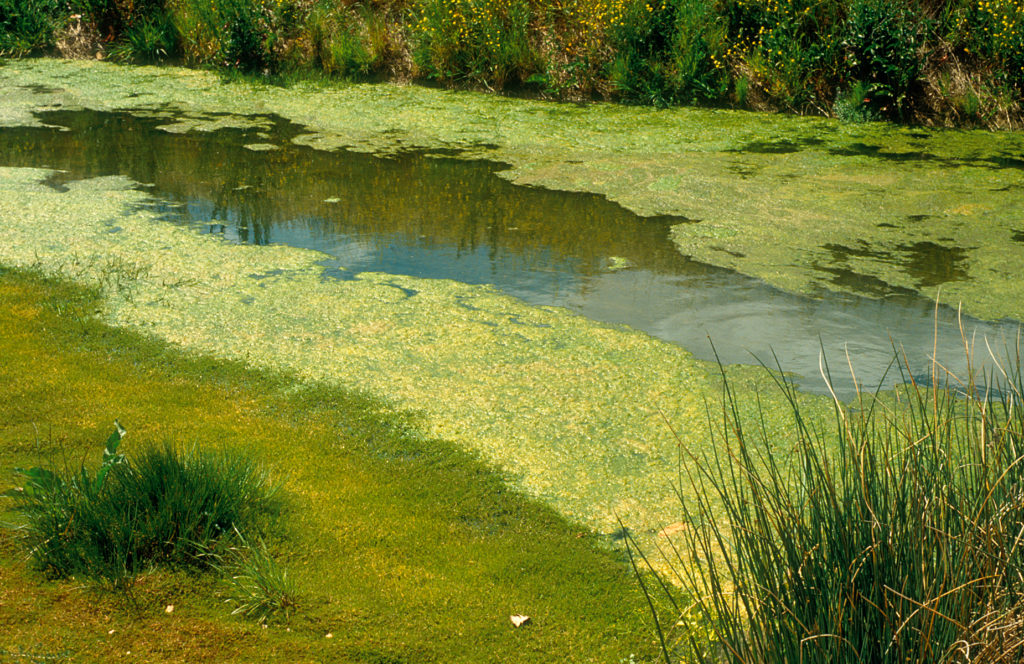
Algae is a simple, plant-like organism that thrives in aquatic environments like pools, ponds, and lakes. While some types of algae are harmless, others can quickly multiply and create unsightly green or brown water. In this article, we will explore what eats algae, what algae eats, and how to prevent algae in the pool.
What Eats Algae?
Algae is a common food source for many aquatic animals, from tiny microscopic organisms to larger fish and mammals. Here are some examples of animals that eat algae:
- Diatoms – Diatoms are microscopic, single-celled organisms that live in freshwater and marine environments. They are a type of algae and are known for their intricate, glass-like shells. Diatoms feed on other types of algae and are eaten by small fish and invertebrates.
- Sargassum – Sargassum is a type of brown algae that forms large, floating mats in the ocean. It provides a habitat for a wide range of marine animals, including fish, crabs, and sea turtles. Some animals, like the sargassum fish, are even named after this type of algae because they rely on it for survival.
- Snails – Some species of snails, like the ramshorn snail, are known to feed on algae. They are often used in aquariums to help keep algae growth in check.
- Shrimp – Shrimp are omnivores that feed on a variety of foods, including algae. They are commonly found in freshwater and marine environments and are an important food source for larger fish.
- Turtles – Many species of turtles are herbivores and feed on aquatic plants, including algae. They play an important role in regulating algae growth in ponds and lakes.
What Does Algae Eat?
Algae is a plant-like organism that makes its own food through photosynthesis. It requires sunlight, carbon dioxide, and nutrients like nitrogen and phosphorus to grow. Algae can feed on a variety of sources, including:
- Nutrients in the water – Algae can feed on nutrients like nitrogen and phosphorus that are present in the water. These nutrients can come from a variety of sources, including runoff from fertilized lawns or gardens, animal waste, and decaying plant matter.
- Sunlight – Algae requires sunlight to carry out photosynthesis and make its own food. The more sunlight that is available, the faster algae can grow.
- Carbon dioxide – Algae uses carbon dioxide to carry out photosynthesis. It can obtain carbon dioxide from the air or from dissolved carbon dioxide in the water.
How to Prevent Algae in the Pool
Algae growth can be a common problem in pools, especially in warmer months when the water temperature is higher. Here are some tips for preventing algae growth in the pool:
- Regularly clean and maintain the pool – It’s important to regularly clean and maintain your pool to prevent algae growth. This includes regularly brushing the walls and floor of the pool, vacuuming debris from the bottom, and skimming leaves and other debris from the surface.
- Properly balance the pool water – Properly balanced pool water is essential for preventing algae growth. This includes maintaining the proper pH, alkalinity, and chlorine levels. You can test your pool water using a test kit or take a sample to your local pool supply store for analysis.
- Use an algaecide – An algaecide is a chemical that is designed to kill algae. There are many different types of algaecides available, so it’s important to choose the right one for your pool.
- Limit the amount of sunlight – Algae thrives in sunlight, so limiting the amount of sunlight that reaches the pool can help prevent algae growth. This can be done by adding shade structures like umbrellas or trees around the pool, or by using a pool cover when the pool is not in use.
- Regularly shock the pool – Shocking the pool involves adding a large amount of chlorine to the water to kill any algae or bacteria that may be present. It is recommended to shock the pool at least once a week, especially during periods of heavy use.
In conclusion, algae is a common problem in aquatic environments like pools, ponds, and lakes. It can be unsightly and can also be a health hazard if left untreated. Many animals, like diatoms, sargassum, snails, shrimp, and turtles, feed on algae, which helps to regulate its growth. Algae feeds on nutrients like nitrogen and phosphorus, as well as sunlight and carbon dioxide. To prevent algae growth in the pool, it’s important to regularly clean and maintain the pool, properly balance the pool water, use an algaecide, limit the amount of sunlight, and regularly shock the pool. By following these tips, you can help keep your pool clean and clear all season long.
Leave a Reply